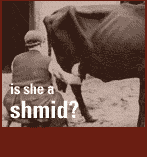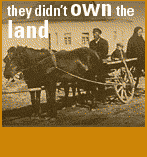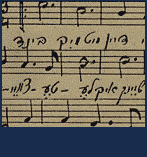

Look at this family portrait. The grandparents older traditonal attire reveals their traditional commitments and the younger mixed generation that followed represent a variety of paths. Yet the entire family existed in a vibrant Jewish context, hearing kiddush (kidesh in Yiddish) Friday night, and one way or another spending the time together at a Shabes table. The diverse Jewish expressions of that time and place-social, political, cultural, and religious-were preserved in the institutions and the work of thinkers who make up much of the landscape of modern Jewish life. Parts of that history come alive today at the many and diverse Jewish summer camps, in the Yiddish theater we still can see in New York, and on the few Israeli kibbutzim that remain.
When people are growing up, they dream of the future, of making a difference. For the youth movement members in Eastern Europe in the 1920s and 1930s, the future they faced was different from anything they could have imagined. Most of that youthful generation, often resisting the Nazis heroically in their daily lives and some through armed resistance efforts, would be lost in the Holocaust. But those who survived lived on to build the Jewish world we live in today while maintaining many of their old ideals.












